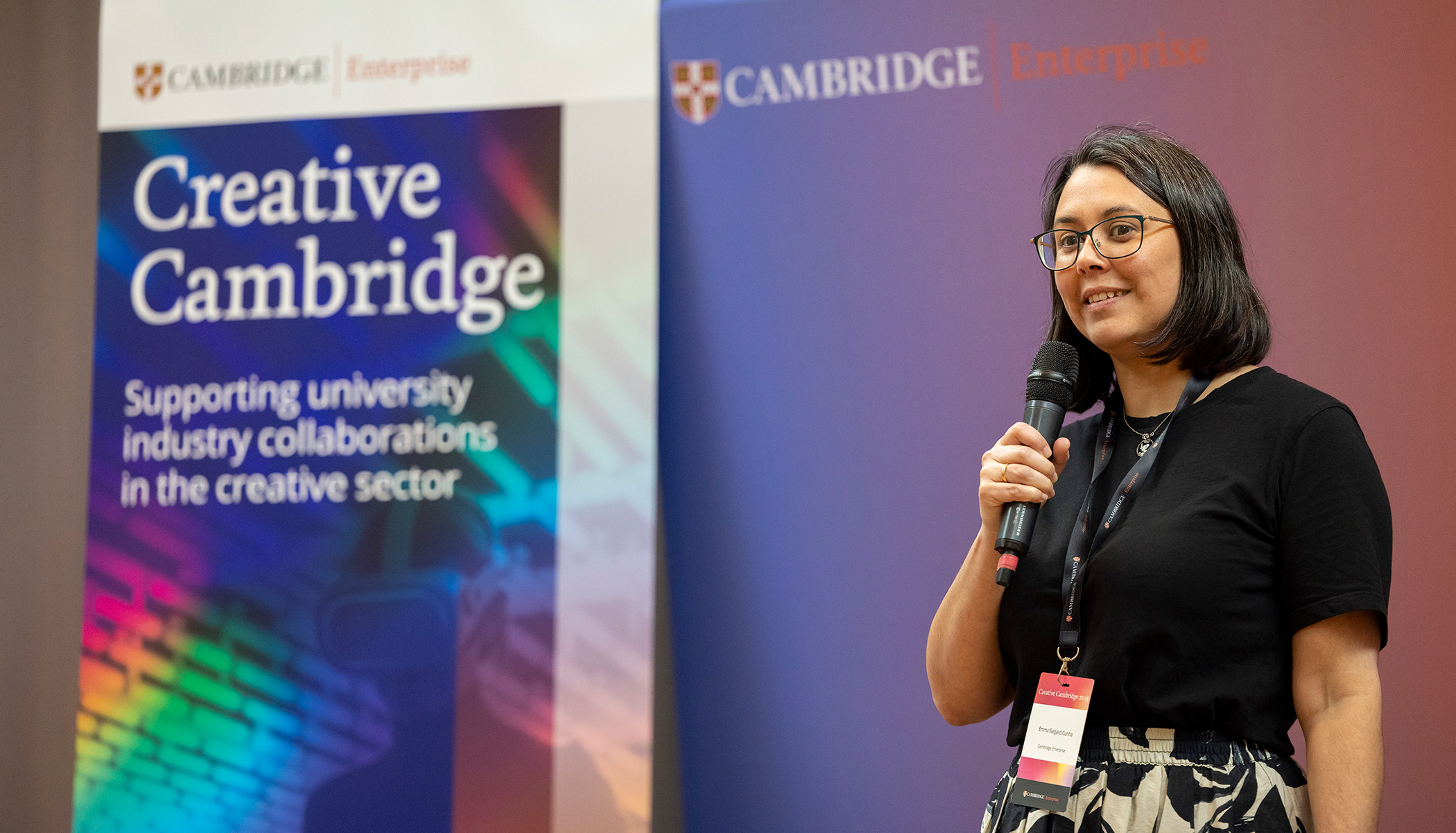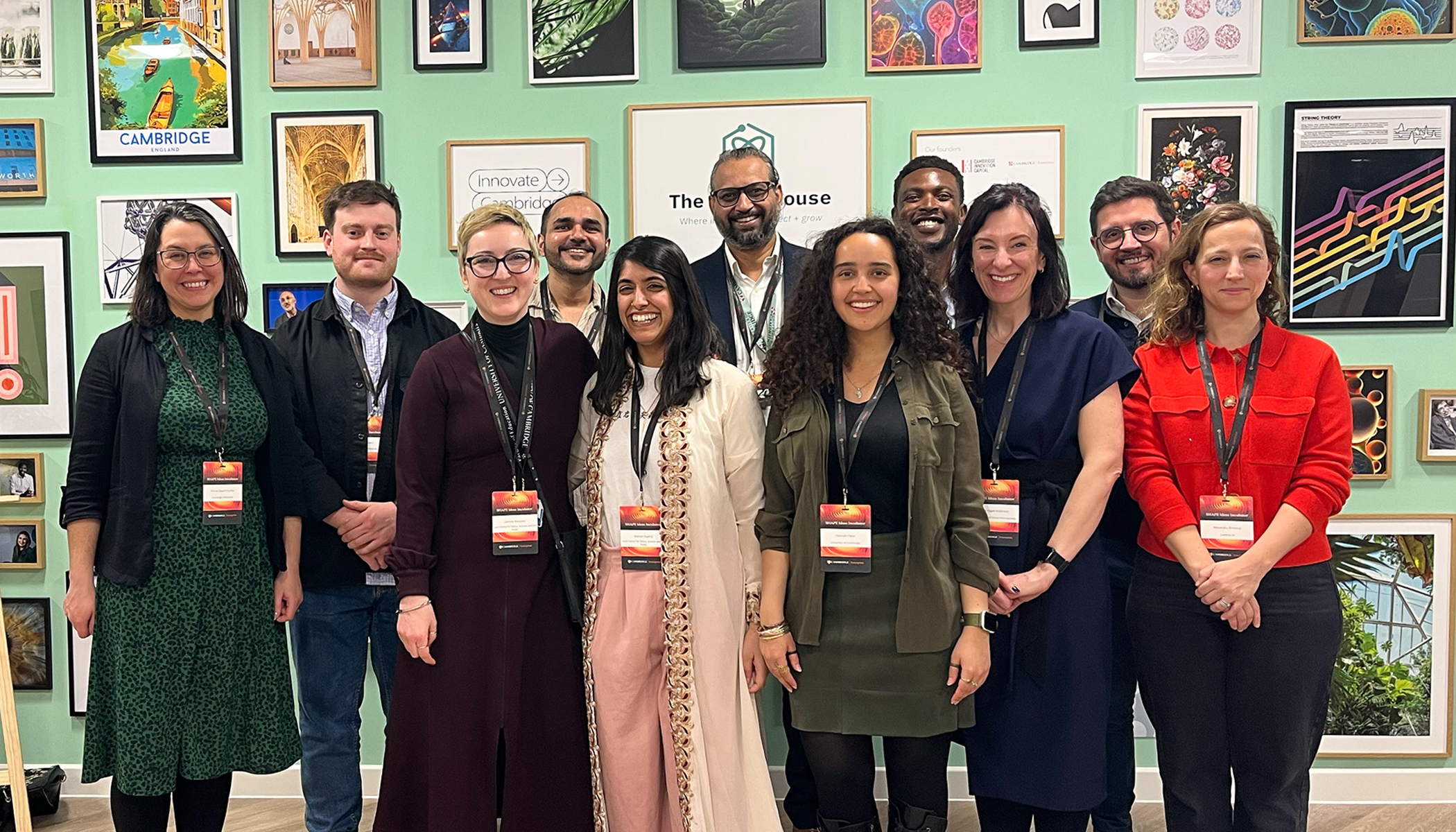How does someone who has just graduated with an applied mathematics PhD end up co-founding a company dedicated to detecting conditions ranging from mental retardation to cancer? There were five transition steps Nick Haan took, which have led to the successful and growing company BlueGnome.
Transition One: Learn the basics.
After Nick Haan submitted his PhD to the University of Cambridge’s Department of Engineering in 2001, he spent 10 months as a postdoc before taking his first transitional step from scientist to company founder and director. The Cambridge Entrepreneurship Centre (the forerunner to Cambridge Enterprise and the Centre for Entrepreneurial Learning), which was attached to the University of Cambridge’s Judge Institute, ran a summer entrepreneurship boot camp. Nick secured a place on the week long intensive course and during the six days he learnt the fundamental tools needed to run a business. At the end of the week Nick pitched an idea to a panel of business experts to set up a company using algorithms to analysis microarrays. However, the panel’s feedback was not positive enough to set up a business and Nick realised he needed to improve both the business proposition and his pitch.
Transition Two: Find a business partner to help identify the right business model.
Through his wife’s business connections, Nick met with Graham Snudden, who was then working for local telecommunications software company Commtag. Together they spent time speaking to potential life science customers based in Cambridge, such as BioRobotics, to try to identify unmet market needs. By October, they presented a prospective business idea to use advanced statistical methods to automate analysis of DNA microarray data, now backed up with customer research, to the University Challenge Fund requesting a Pathfinder grant of £10k to commence preliminary technology development and to explore the market.
Transition Three: Start a company.
BlueGnome was founded January 2002. (The name is a combination of University of Cambridge’s colour blue, and a play on Genome.) For the first couple of months they worked at home. After speaking with Cambridge Entrepreneurship Centre’s business advisors, the company moved into space in the Cambridge Enterprise Laboratory at the William Gates Building. This provided them with a proper office and address with the advantage of linking the company to the University and into the local angel network. Nick and Graham then applied for a £45k Smart Award to develop their statistical approach to proof of concept stage.
Transition Four: Obtain finance to grow the company.
At the same time as applying for the Smart Award, the two founders decided to raise venture capital money. They spoke to numerous venture capitalists over the next four months but were turned down as the business proposition was thought to be too early and investors were still recovering from the dot com crash. Next they spoke with angel investors, but after negotiations fell apart they applied for and received £75k funding at the start of 2003 from the University’s Challenge Fund. The relatively small amount of funding was a blessing in disguise, focussing the founders on revenue generation, keeping costs low, and focusing on customer needs – all of which have helped BlueGnome to grow in a competitive climate.
Transition Five. Focus the company on a product customers will buy.
The company hired their first employees and by November 2003 a piece of software for the analysis of microarrays used by scientists to analyse data had been completed. Nick and Graham continued to speak to current and potential customers to ensure they were meeting customer needs and, by the end of the year, BlueGnome produced its first revenue of £20k.
The transition was complete, from scientist to company director in less than three years. Nick Haan has a motto which is: understand the market, build a product, and generate revenue = a track record. What does a track record get you? Recognition. By mid 2004 the company received investments from The Wellcome Trust and NESTA.
Since those first few years the company has had steady growth with no further investments. The first customer came through the Cambridge Network. The second customer was the University of Cambridge and the third customer was Unilever (through University connections). There were customers outside of Cambridge and they quickly built up a number of reference sites.
By 2005 the company had a turnover of £350k and had started selling its software to help UK hospitals use microarrays to investigate genetic disorders in a clinical context. During a Prague conference on human genetics, the two founders decided to move beyond selling software alone, and also produce the microarray tests themselves. In the early days, the company teamed up with University’s microarray experts in the Pathology Department who could supply microarrays to the company’s design. An early prototype was produced at the end of 2005.
With 90 conditions related to retardation, diagnosis can be challenging with only a 4% success rate. BlueGnome can test a whole person’s genome for missing DNA and increased diagnostic success to 20%. The company can now test for 130 conditions associated with mental retardation. By 2006, 80% of the UK National Health Services were using BlueGnome’s technology for testing and revenue had increased to £750k.
In 2007, BlueGnome made the full transition to a clinical microarray company which also provided the software to analyse results. The company then made its first marketing push into Europe and United States. In 2008, with expected revenues of £3 million, the company launched a diagnostic microarray to test for haematological cancers, and a test for use in IVF treatment to check eggs contain a complete set of chromosomes.
The formation of BlueGnome is not just about the transitions needed to grow a company but also the importance of the Cambridge network in providing advice, potential first customers, technology know-how and, ultimately, to providing support to the next generation of companies.











